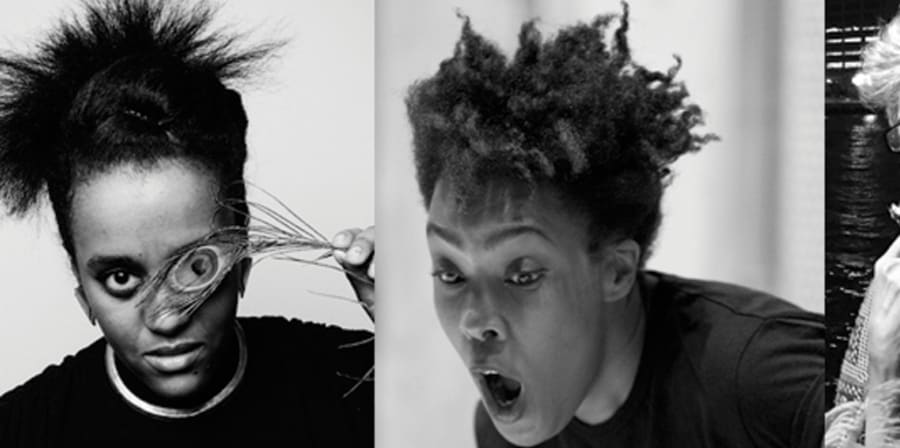David Toop: The voice is an uncanny instrument

The Quiet Coach on a train is often a site of tension. So when three men, all of them drunk as wasps drowning in a whiskey vat, decided to occupy a table just by the sign that said QUIET COACH, the word trouble might as well have been added to the buffet menu.
Their fun lasted from Edinburgh to Darlington, at which point the youngest, most voluble of the three was neatly extricated from the train by transport police, presumably fated to find his way to Leeds by many buses, all of the loudly advertised plans for himself and his girlfriend gleefully trashed by Mr Alcohol. This left the other two in whispered conference. What could possibly have caused this catastrophe? After all, the lad had done no harm. Finally their puzzlement was solved by the woman who stood up to inform them: “You are in the quiet coach.”
This scenario exposes the ethical conflicts that typically erupt from antagonisms of acoustic and social space. What also comes through is the stark power of the voice to disrupt and dismay. Softly unassuming in repose, voices can mutate into weapons with an inexhaustible supply of ammunition, the harm of their most serious wounds lingering over a lifetime.
Voice is an uncanny instrument. Up it rises out of the body like fire and smoke, but from where: the lungs, the chest, the stomach, the larynx, the mouth? In close proximity you can feel its sound entering the ears yet also sense the air of it, even the temperature and smell. Voices heard together in anger or laughter are like weather systems in collision, swirling together through echoing space they are loath to share.
Profound thoughts, banalities, vulgarities and obscenities, confessional whispers, harrowing screams and enticing murmurs: these are all voice. Every voice functions within a narrow spectrum yet each is distinct, identifiable, unique. Masked emotion is betrayed by the voice, each shred of pride or vulnerability, anguish or joy. Voices match each other in intricate improvised counterpoint, flow in affinity or rancour; sympathy soothes grief, calm may neutralise rage yet neither can erase the raw texture of the voice they seek to subdue.
Voices in extremis are fearsome. Listen to singers who have technique and courage to explore the far limits. Possessing the same basic instrument, most of us know that comparable extremes are buried deep inside us, unresistingly unlocked by emotional or physical pain, ecstasy, alarm and fear. So there is a fear of self-knowledge in hearing this alien voice, secretly carried within.
Improvising singers work with differing levels of analytical consciousness. These may range from obliviousness to hyper-awareness, yet all these levels are distinct from the analytical consciousness of speaking about singing. Can the voice talk about itself, in flux between that part of the brain that engages in analytical discourse and the body giving full flight to sung voice? Can it move fluidly between all of its properties: its silent, secret self; its instrumental self, separated from communicative imperatives of language; its need to project ideas, sounds, stories and questions out into the air, often using technologies that launch the voice into spaces far beyond its own body?
Since 2000 I have been based at London College of Communication, occasionally wondering what the word ‘communication’ means in the digitised, globalised twenty-first century. A voice is a thing of strange noises, fluctuating pitches and terrible silences. It must fight through tangled thickets of class, race, gender, sexuality, ideology – what Mladen Dolar in his book, A Voice and Nothing More, called “the political dimension of the voice” – for recognition, clarity, even just audibility within an ecology of communicative signs.
In the past I interviewed many remarkable singers – Kate Bush, Björk, Luther Vandross, Robert Wyatt, Scott Walker, Abbey Lincoln, Bobby Womack, Diamanda Galas, Youssou N’Dour. As if the nature of the voice is an unspeakable mystery, none of them had much to say about the voice as instrument, only its context and effect. In 1989, for example, Kate Bush told me about her visit to Bulgaria, to collaborate with The Trio Bulgarka for her album, The Sensual World: “The girls were asked to perform by a friend, so the oldest lady, Eva, picked up the telephone and listened to the dialling tone, went ‘Mmmmm,’ and they all tuned up to the note and burst into song. Within five minutes I was just crying. We’re not used to that intensity, really.”
These are the reasons why I have brought together three remarkable improvising singers – Shelley Hirsch, Sofia Jernberg and Elaine Mitchener (pictured above) – for an event: The Ecology of the Voice. Our purpose is to explore these possibilities (with the audience), moving as freely as possible between vocal modes and registers. Will it work? Only those within hearing distance of the voice will know.
David Toop
Chair of Audio Culture and Improvisation
London College of Communication